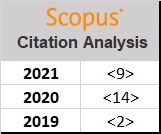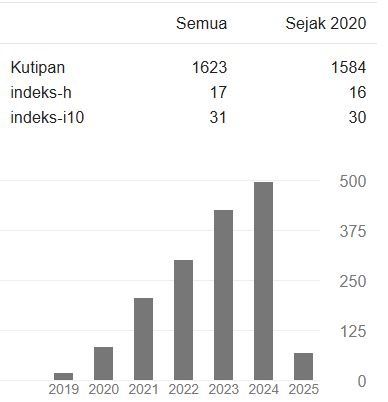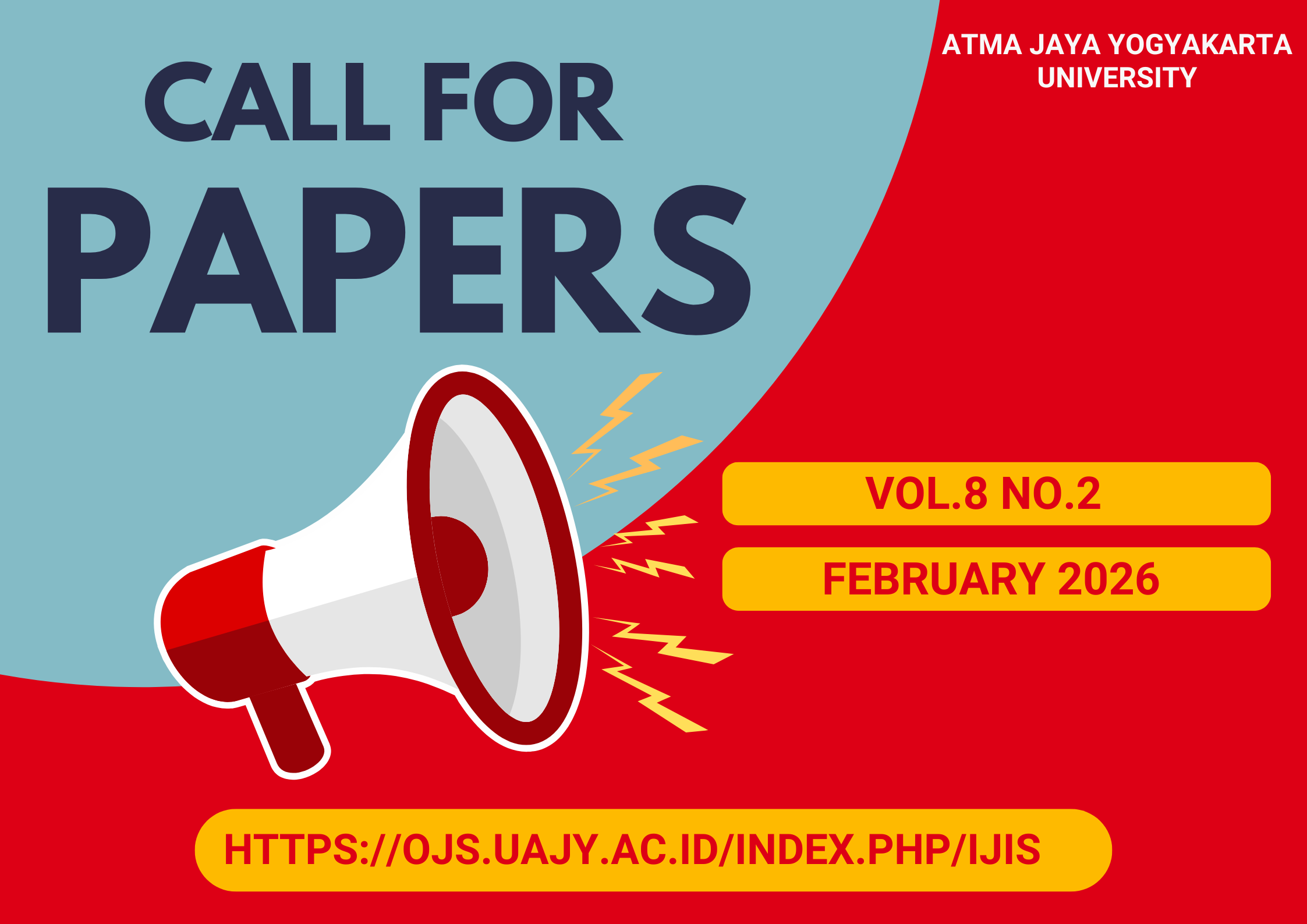Comparative Analysis of Classification Methods of KNN and Naïve Bayes to Determine Stress Level of Junior High School Students
DOI:
https://doi.org/10.24002/ijis.v2i2.3035Keywords:
Stres, Naïve Bayes, KNN, Akurasi, PerbandinganAbstract
Stress is generally defined as a state where someone is mentally disturbed as the response to the adversity that he/she experiences. Junior High School students usually are not aware of the stress that they encounter. This research aims to compare two classification methods of KNN and Naïve Bayes to determine stress level. The data of this research were gathered from 254 respondents from Catholic Junior High School of Don Bosco Bitung. The tests of k-cross validation and percentage split from the data showed that Naïve Bayes method excelled KNN method. With k=3, KNN accuracy reached 86.61% at the highest and Naïve Bayes reached 87.40%. Meanwhile, based on percentage split test, the average of Naïve Bayes accuracy was higher than KNN with percentage of 88.31%. Moreover, for the precision and recall, Naïve Bayes was higher than KNN with 88.30% and 87.40% seen from the k-cross validation.References
P. Parks, Teen And Stress. San Diego: Reference Point Press, 2015.
J. S. Kanchana, H. T. Fathima, R. Surya, and R. Sandhiya, “Stress Detection Using Classification Algorithm,” Int. J. Eng. Res. Technol., vol. 7, no. 04, 2018.
I. A. Dahlia, M. Irfan, and W. Uriawan, “Perbandingan Metode Naive Bayes dan K-Nearest Neighbor untuk Prediksi Perceraian (Studi Kasus : Pengadilan Agama Cimahi),” Insight, vol. 1, 2018.
N. M. S. Iswari, W. Wella, and R. Ranny, “Perbandingan Algoritma kNN, C4.5, dan Naive Bayes dalam Pengklasifikasian Kesegaran Ikan Menggunakan Media Foto,” J. Ultim., 2017.
N. T. Romadloni, I. Santoso, and S. Budilaksono, “Perbandingan Metode Naïve Bayes, KNN dan Decision Tree Terhadap Analisis Sentimen Transportasi KRL Commuter Line,” IKRA-ITH Inform., vol. 3, 2019.
N. R. Indraswari and Y. I. Kurniawan, “APLIKASI PREDIKSI USIA KELAHIRAN DENGAN METODE NAIVE BAYES,” Simetris J. Tek. Mesin, Elektro dan Ilmu Komput., 2018.
D. Prajarini, “Perbandingan Alogoritma Klasifikasi Data Mining Untuk Prediksi Penyakit Kulit,” Informatics J., vol. 1, 2016.
R. M. Spielman, Psychology. Houston: Openstax, 2017.
Warno, T. Umar, and R. Arlizon, “Pengaruh Layanan Bimbingan Kelompok Terhadap Penurunan Tingkat Stres Siswa Kelas VIII SMP IT Al-Ikhsan Boarding School Riau,” J. Online Mhs. Bid. Kegur. dan Ilmu Pendidik., vol. 2, 2015.
J. S. Nevid, Essential of Psychology : Concepts and Applications, 5th ed. Boston: Cangage Learning, 2015.
D. T. Larose and C. D. Larose, “Data Mining and Predictive Analytics,” Wiley Ser. Methods Appl. Data Min., 2015.
Y. L. Prasadad, Big Data Analytics Made Easy. Chennai: Notion Press, 2016.
G. Hackeling, Mastering Machine Learning With Scikit-learn, 2nd ed. Birmingham: Packt Publishing, 2017.
Y. C. Tapidingan, D. Paseru, and R. Turang, “Sistem Klasifikasi Penentuan Tingkat Stres Siswa Sekolah Menengah Pertama Menggunakan Metode K-Nearest Neighbors,” J. disajikan dalam 3rd Int. Conf. Oper. Res. Univ. Sam Ratulangi, Manad. 20-21 Sept., 2018.
T. D. Rahmawati and F. N. Adnan, “Penentuan Produk Asuransi BPJS Berdasarkan Profil Pelanggan Dengan Pendekatan K-Nearest Neighbor Manhattan Distance,” J. Inf. Syst., vol. 2, 2016.
D. Sartika and D. Indra, “Perbandingan Algoritma Klasifikasi Naive Bayes, Nearest Neighbour, dan Decision Tree pada Studi Kasus Pengambilan Keputusan Pemilihan Pola Pakaian,” J. Tek. Inform. Dan Sist. Inf., 2017.
Indrayanti, D. Sugianti, and M. A. Al Karomi, “Optimasi Parameter K Pada Algoritma K-Nearest Neighbour Untuk Klasifikasi Penyakit Diabetes Mellitus,” Pros. SNATIF Ke-4 2017, 2017.
S. W. Binabar and Ivandari, “Optimasi Parameter K pada Algoritma KNN untuk Deteksi Penyakit Kanker Payudara,” IC-Tech, vol. 13, 2018.
I. N. Atthalla, A. Jovandy, and H. Habibie, “Klasifikasi Penyakit Kanker Payudara Menggunakan Metode K-Nearest Neighbor,” Pros. Annu. Res. Semin., vol. 4, 2018.
I. L. Qurnia, E. Prasetyo, and R. F. Zainal, “CLASSIFICATION OF DIABETES DISEASE USING NAIVE BAYES Case Study : SITI KHADIJAH HOSPITAL,” 2016.
M. S. Islam, M. I. Fauzan, and M. T. Pratama, "Penggunaan Naïve Bayes Classifier Untuk Pengelompokan Pesan Pada Ruang Percakapan Maya Dalam Lingkungan Kemahasiswaan", J. Computech & Bisnis, vol. 4, no. 2017.
M. Sabransyah, Y. N. Nasution, and D. Tisna, “Aplikasi Metode Naive Bayes dalam Prediksi Risiko Penyakit Jantung Naive Bayes Method for a Heart Risk Disease Prediction Application,” J. EKSPONENSIAL, 2017.
R. N. Devita, H. W. Herwanto, and A. P. Wibawa, “Perbandingan Kinerja Metode Naive Bayes dan K-Nearest Neighbor untuk Klasifikasi Artikel Berbahasa indonesia,” J. Teknol. Inf. dan Ilmu Komput., 2018.
R. Wongso, F. A. Luwinda, B. C. Trisnajaya, O. Rusli, and Rudy, “News Article Text Classification in Indonesian Language,” in Procedia Computer Science, 2017.
D. Srianto and E. Mulyanto, “Perbandingan K-Nearest Neighbor dan Naïve Bayes Untuk Klasifikasi Layak Tanam Pohon Jati,” J. Teknol. Inf., vol. 15, 2016.
Z. E. Rasjid and R. Setiawan, “Performance Comparison and Optimization of Text Document Classification using k-NN and Naïve Bayes Classification Techniques,” in Procedia Computer Science, 2017.
Downloads
Published
How to Cite
Issue
Section
License
Indonesian Journal of Information Systems as journal publisher holds copyright of papers published in this journal. Authors transfer the copyright of their journal by filling Copyright Transfer Form and send it to Indonesian Journal of Information Systems.

Indonesian Journal of Information Systems is licensed under a Creative Commons Attribution-NonCommercial 4.0 International License.

















